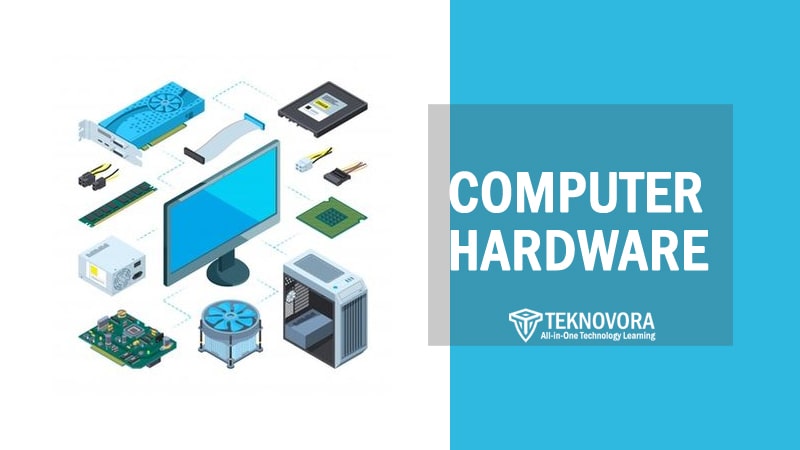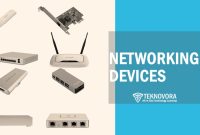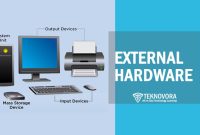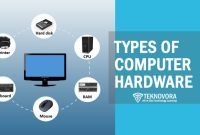The engine that powers our digital world is made of something tangible. Computer Hardware encompasses all the physical components that make a computer system work. From the central processing unit (CPU) to the peripherals you interact with daily, understanding these components is essential for anyone who uses a computer, whether for work, entertainment, or communication. Knowing the basics allows you to troubleshoot problems, upgrade effectively, and make informed purchasing decisions.
At its core, computer hardware refers to the physical parts of a computer system. This contrasts with software, which is the set of instructions that the hardware executes. Think of it like a car: the hardware is the engine, chassis, and wheels, while the software is the driver and the rules of the road. Without both hardware and software, a computer cannot function. Hardware components are interconnected, working together to process data, display information, and perform tasks.
The Essential Components of a Computer
Let’s delve into the major components that make up a typical computer system. We will cover the function of each part and how they work together.
Central Processing Unit (CPU)
The CPU, often called the “brain” of the computer, is responsible for executing instructions and performing calculations. It fetches instructions from memory, decodes them, and then executes them. The CPU’s performance is measured in clock speed (GHz) and the number of cores. A higher clock speed and more cores generally indicate a faster and more powerful CPU.
- Cores and Threads: Modern CPUs often have multiple cores, allowing them to perform multiple tasks simultaneously. Each core can also support multiple threads, further increasing the CPU’s ability to handle parallel processing. For example, a CPU with 8 cores and 16 threads can effectively handle 16 independent tasks at the same time.
- Cache Memory: CPUs have a small amount of very fast memory called cache. This cache stores frequently accessed data and instructions, allowing the CPU to access them much faster than retrieving them from main memory (RAM). There are typically three levels of cache: L1, L2, and L3, with L1 being the fastest and smallest, and L3 being the slowest and largest.
- Integrated Graphics: Some CPUs include integrated graphics processing units (GPUs). These integrated GPUs can handle basic graphical tasks, reducing the need for a dedicated graphics card. Integrated graphics are typically less powerful than dedicated graphics cards, but they are sufficient for everyday tasks and light gaming.
The CPU is installed on the motherboard using a specific socket. Common CPU manufacturers include Intel and AMD, and their CPUs use different sockets, ensuring compatibility between the CPU and the motherboard. When upgrading your CPU, it’s vital to ensure that the new CPU is compatible with your motherboard’s socket.
Random Access Memory (RAM)
RAM is the computer’s short-term memory. It stores data and instructions that the CPU is currently using. Unlike hard drives or solid-state drives (SSDs), RAM is volatile, meaning that the data stored in RAM is lost when the computer is turned off. The more RAM a computer has, the more programs and data it can handle simultaneously without slowing down.
- Types of RAM: There are different types of RAM, including DDR4 and DDR5. DDR5 is the newer and faster standard, offering improved performance and power efficiency compared to DDR4. However, DDR5 requires a compatible motherboard.
- Speed and Latency: RAM speed is measured in MHz, and latency is measured in CAS latency (CL). Higher speed and lower latency generally indicate better performance. However, it’s important to ensure that the RAM speed is compatible with your motherboard and CPU.
- Dual-Channel and Quad-Channel: RAM modules can be installed in dual-channel or quad-channel configurations. These configurations allow the CPU to access multiple RAM modules simultaneously, increasing memory bandwidth and improving performance.
RAM is crucial for smooth multitasking and running demanding applications. Insufficient RAM can lead to slowdowns and performance issues.
Motherboard
The motherboard is the central circuit board that connects all the other components of the computer. It provides the electrical connections and communication pathways for the CPU, RAM, storage devices, and other peripherals. The motherboard determines the types of components that can be used with the computer.
- Chipset: The chipset is a set of chips on the motherboard that controls communication between the CPU, RAM, and other peripherals. The chipset determines the features and capabilities of the motherboard, such as the number of USB ports, SATA ports, and PCI-e slots.
- Sockets and Slots: The motherboard has sockets for the CPU and RAM, as well as slots for expansion cards such as graphics cards and sound cards. The type of socket determines the type of CPU that can be used, and the type of slots determines the type of expansion cards that can be used.
- Form Factor: The motherboard comes in different form factors, such as ATX, Micro-ATX, and Mini-ITX. The form factor determines the size and shape of the motherboard, as well as the number of expansion slots and other features.
Choosing the right motherboard is crucial for building a compatible and functional computer system.
Storage Devices
Storage devices are used to store data and programs permanently. There are two main types of storage devices: hard drives (HDDs) and solid-state drives (SSDs).
- Hard Disk Drives (HDDs): HDDs store data on spinning platters. They are relatively inexpensive and offer large storage capacities. However, they are slower than SSDs and more susceptible to damage from physical shock.
- Solid-State Drives (SSDs): SSDs store data electronically using flash memory. They are much faster than HDDs and more durable. However, they are typically more expensive and offer smaller storage capacities. NVMe SSDs connect directly to the PCI-e bus for even faster speeds.
- Storage Capacity and Speed: Storage capacity is measured in gigabytes (GB) or terabytes (TB). Speed is measured in RPM (revolutions per minute) for HDDs and read/write speeds for SSDs. Higher capacity and faster speeds generally indicate better performance.
Choosing the right storage device depends on your needs and budget. SSDs are generally recommended for the operating system and frequently used programs, while HDDs are suitable for storing large files such as videos and photos.
Graphics Card (GPU)
The graphics card, or GPU (Graphics Processing Unit), is responsible for rendering images and videos. It processes the data needed to display visual information on the monitor. A dedicated graphics card is especially important for gaming, video editing, and other graphics-intensive tasks.
- VRAM: Graphics cards have their own dedicated memory called VRAM (Video RAM). VRAM stores textures, frame buffers, and other graphical data. More VRAM allows the graphics card to handle more complex scenes and higher resolutions.
- GPU Cores and Clock Speed: The performance of a graphics card depends on the number of GPU cores and the clock speed. More cores and higher clock speeds generally indicate better performance.
- Connectivity: Graphics cards connect to the motherboard via a PCI-e slot. They also have ports for connecting to monitors, such as HDMI and DisplayPort.
Graphics cards are manufactured by companies like NVIDIA and AMD. Choosing the right graphics card depends on your budget and the types of games or applications you plan to use.
Power Supply Unit (PSU)
The power supply unit (PSU) provides power to all the components of the computer. It converts AC power from the wall outlet into DC power that the computer can use. The PSU’s wattage rating indicates the amount of power it can supply.
- Wattage: Choosing the right wattage PSU is crucial for ensuring that all the components of the computer have enough power. It’s important to calculate the total power consumption of all the components and choose a PSU with a wattage rating that is higher than that.
- Efficiency: PSUs are rated for efficiency. More efficient PSUs waste less power and generate less heat. 80+ certifications indicate the efficiency of the PSU.
- Modular vs. Non-Modular: Modular PSUs allow you to detach unused cables, making cable management easier. Non-modular PSUs have all the cables permanently attached.
A reliable PSU is essential for the stability and longevity of your computer system.
Computer Case
The computer case houses all the internal components of the computer. It provides physical protection and helps to keep the components cool. Computer cases come in different sizes and styles.
- Form Factor: The form factor of the computer case determines the size of the motherboard and other components that can be installed. Common form factors include ATX, Micro-ATX, and Mini-ITX.
- Cooling: Computer cases have fans and vents to help keep the components cool. Some cases also support liquid cooling systems.
- Aesthetics: Computer cases come in a variety of styles and colors. Some cases have tempered glass panels and RGB lighting.
Choosing the right computer case depends on your needs and preferences.
Peripherals
Peripherals are external devices that connect to the computer. They allow you to interact with the computer and input or output data.
- Input Devices: Input devices include keyboards, mice, trackpads, and touchscreens. These devices allow you to enter data and control the computer.
- Output Devices: Output devices include monitors, printers, and speakers. These devices allow the computer to display information and output sound.
- Connectivity: Peripherals connect to the computer via USB, Bluetooth, or other wireless technologies.
Peripherals are essential for using a computer effectively.
Understanding the Interplay of Computer Hardware Components
The beauty of a computer lies not just in its individual parts, but in how they communicate and work together. This section examines the crucial interactions between these components.
The CPU and RAM Relationship
The CPU constantly fetches instructions and data from RAM. The speed at which this happens is critical to overall system performance. Faster RAM and a more efficient memory controller on the CPU result in quicker data access. This relationship is fundamental. Consider it like this: the CPU is a chef who needs ingredients (data) to cook (process). RAM is the chef’s immediate countertop space. The faster the chef can grab the ingredients from the countertop, the faster the meal can be prepared.
Motherboard as the Communication Hub
The motherboard acts as the central nervous system. It provides pathways (buses) for data to travel between all the components. The chipset on the motherboard dictates the speed and bandwidth of these pathways. A high-quality motherboard ensures stable and efficient communication.
Storage and Boot Process
When you power on your computer, the CPU first accesses the BIOS (Basic Input/Output System) or UEFI (Unified Extensible Firmware Interface) stored on the motherboard. This firmware initiates a power-on self-test (POST) to check the hardware. It then locates the operating system on the storage device (usually an SSD or HDD) and loads it into RAM. The speed of the storage device significantly affects the boot time.
GPU and Display Output
The GPU takes data from the CPU and transforms it into images that can be displayed on a monitor. The GPU’s performance determines the frame rate and resolution that can be achieved in games and other graphics-intensive applications. The monitor’s resolution and refresh rate must also be compatible with the GPU’s output capabilities.
Power Supply’s Critical Role
The PSU supplies power to all the components. If the PSU is not powerful enough or is failing, it can cause system instability, crashes, and even hardware damage. A reliable PSU is a non-negotiable component.
Factors Influencing Computer Hardware Performance
Many factors affect how well your computer performs, let’s explore some key ones.
CPU Clock Speed and Core Count
The CPU’s clock speed and core count are primary determinants of its performance. A higher clock speed means the CPU can execute more instructions per second. More cores allow the CPU to handle multiple tasks simultaneously.
RAM Capacity and Speed
The amount of RAM and its speed affect the computer’s ability to multitask and run demanding applications. Insufficient RAM can lead to slowdowns and performance issues.
Storage Device Type and Speed
The type and speed of the storage device affect the boot time, application loading time, and overall system responsiveness. SSDs are significantly faster than HDDs, resulting in a noticeable improvement in performance.
GPU Performance
The GPU’s performance is critical for gaming, video editing, and other graphics-intensive tasks. A powerful GPU can handle more complex scenes and higher resolutions.
Motherboard Chipset
The motherboard chipset determines the features and capabilities of the motherboard. A high-end chipset can support faster RAM speeds, more expansion slots, and other advanced features.
Cooling System
An effective cooling system is essential for preventing overheating and maintaining stable performance. Overheating can cause the CPU and GPU to throttle their performance, leading to slowdowns.
Upgrading Computer Hardware
Upgrading computer hardware is a common way to improve performance and extend the lifespan of a computer. Here’s how to approach it effectively.
Identifying Bottlenecks
Before upgrading, it’s important to identify the bottlenecks in the system. A bottleneck is a component that is limiting the performance of the other components. Common bottlenecks include the CPU, RAM, GPU, and storage device.
CPU Upgrade Considerations
When upgrading the CPU, it’s important to ensure that the new CPU is compatible with the motherboard’s socket. You may also need to upgrade the motherboard if the new CPU requires a different socket.
RAM Upgrade Considerations
When upgrading RAM, it’s important to ensure that the new RAM is compatible with the motherboard and CPU. You should also consider the speed and latency of the RAM.
GPU Upgrade Considerations
When upgrading the GPU, it’s important to ensure that the new GPU is compatible with the motherboard’s PCI-e slot and that the PSU has enough wattage to power the new GPU.
Storage Upgrade Considerations
When upgrading the storage device, it’s important to consider the type and speed of the new storage device. SSDs are generally recommended for the operating system and frequently used programs.
Preparing for the Upgrade
Before upgrading, back up your data and ensure that you have the necessary tools and drivers. You should also disconnect the power cord and ground yourself to prevent static electricity from damaging the components.
Step-by-Step Upgrade Process
Follow a step-by-step process to safely remove the old component and install the new component. Consult the motherboard and component manuals for detailed instructions.
Testing the Upgrade
After upgrading, test the system to ensure that the new component is working properly. Run benchmark tests to compare the performance before and after the upgrade.
Troubleshooting Common Hardware Issues
Even with the best hardware, problems can arise. Here’s how to troubleshoot common issues.
Power Supply Problems
- Symptom: Computer won’t turn on, or turns on and then immediately shuts off.
- Possible Causes: Faulty PSU, insufficient wattage, loose connections.
- Troubleshooting Steps: Check the power cord, test the PSU with a PSU tester, ensure that all power cables are securely connected.
Overheating Problems
- Symptom: Computer shuts down unexpectedly, performance is sluggish.
- Possible Causes: Insufficient cooling, blocked vents, faulty fans.
- Troubleshooting Steps: Clean the vents and fans, reapply thermal paste to the CPU and GPU, install additional fans or a liquid cooling system.
Memory Problems
- Symptom: Blue screen errors, random crashes, system instability.
- Possible Causes: Faulty RAM, incompatible RAM, loose RAM modules.
- Troubleshooting Steps: Reseat the RAM modules, run a memory diagnostic test, replace faulty RAM modules.
Storage Problems
- Symptom: Slow boot times, application crashes, data corruption.
- Possible Causes: Faulty storage device, fragmented storage, driver issues.
- Troubleshooting Steps: Run a disk check utility, defragment the storage device, update the storage device drivers.
Graphics Card Problems
- Symptom: Display issues, artifacting, driver crashes.
- Possible Causes: Faulty graphics card, outdated drivers, overheating.
- Troubleshooting Steps: Update the graphics card drivers, check the graphics card temperature, reseat the graphics card.
Motherboard Problems
- Symptom: System won’t boot, no POST, error beeps.
- Possible Causes: Faulty motherboard, BIOS issues, loose connections.
- Troubleshooting Steps: Reseat all components, clear the CMOS, update the BIOS.
Building Your Own Computer
Building your own computer is a rewarding experience that allows you to customize your system to your specific needs and budget.
Planning the Build
Start by planning the build. Determine your budget, the types of applications you will be using, and the performance you need.
Selecting Components
Select the components based on your budget and performance requirements. Ensure that all the components are compatible with each other.
Assembling the System
Assemble the system carefully, following the instructions in the motherboard and component manuals. Take your time and pay attention to detail.
Installing the Operating System
Install the operating system and drivers. Test the system to ensure that everything is working properly.
Optimizing Performance
Optimize the performance of the system by tweaking the BIOS settings, installing the latest drivers, and configuring the operating system.
The Future of Computer Hardware
Computer hardware is constantly evolving. New technologies are emerging all the time, pushing the boundaries of performance and efficiency.
Quantum Computing
Quantum computing is a revolutionary technology that could solve problems that are impossible for classical computers. Quantum computers use qubits instead of bits, allowing them to perform calculations much faster.
Neuromorphic Computing
Neuromorphic computing is a type of computing that mimics the structure and function of the human brain. Neuromorphic computers use artificial neurons and synapses to process information.
3D Stacking
3D stacking is a technique that involves stacking multiple layers of chips on top of each other. This can increase the density and performance of the chips.
Advanced Materials
New materials are being developed that can improve the performance and efficiency of computer hardware. These materials include graphene, carbon nanotubes, and perovskites.
AI and Machine Learning in Hardware Design
AI and machine learning are being used to design and optimize computer hardware. These technologies can help to create more efficient and powerful hardware.
Conclusion
Understanding computer hardware is crucial for anyone who uses a computer. By understanding the different components of a computer, how they work together, and how to troubleshoot common issues, you can make informed decisions about upgrading your system and keeping it running smoothly. The future of computer hardware is exciting, with new technologies emerging all the time that will continue to push the boundaries of performance and efficiency. Whether you’re a seasoned tech enthusiast or a curious beginner, a solid grasp of computer hardware empowers you in the digital world. Remember to always prioritize compatibility, research thoroughly before upgrades, and handle components with care.




